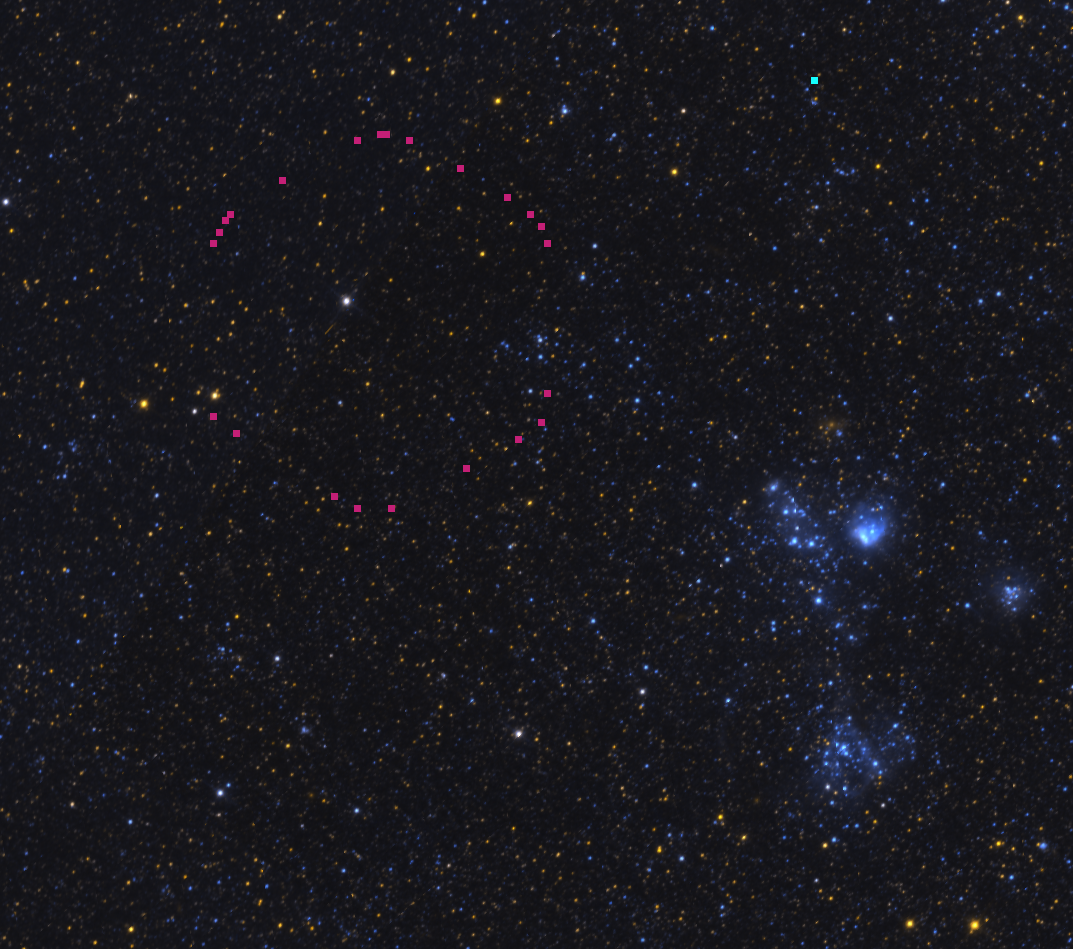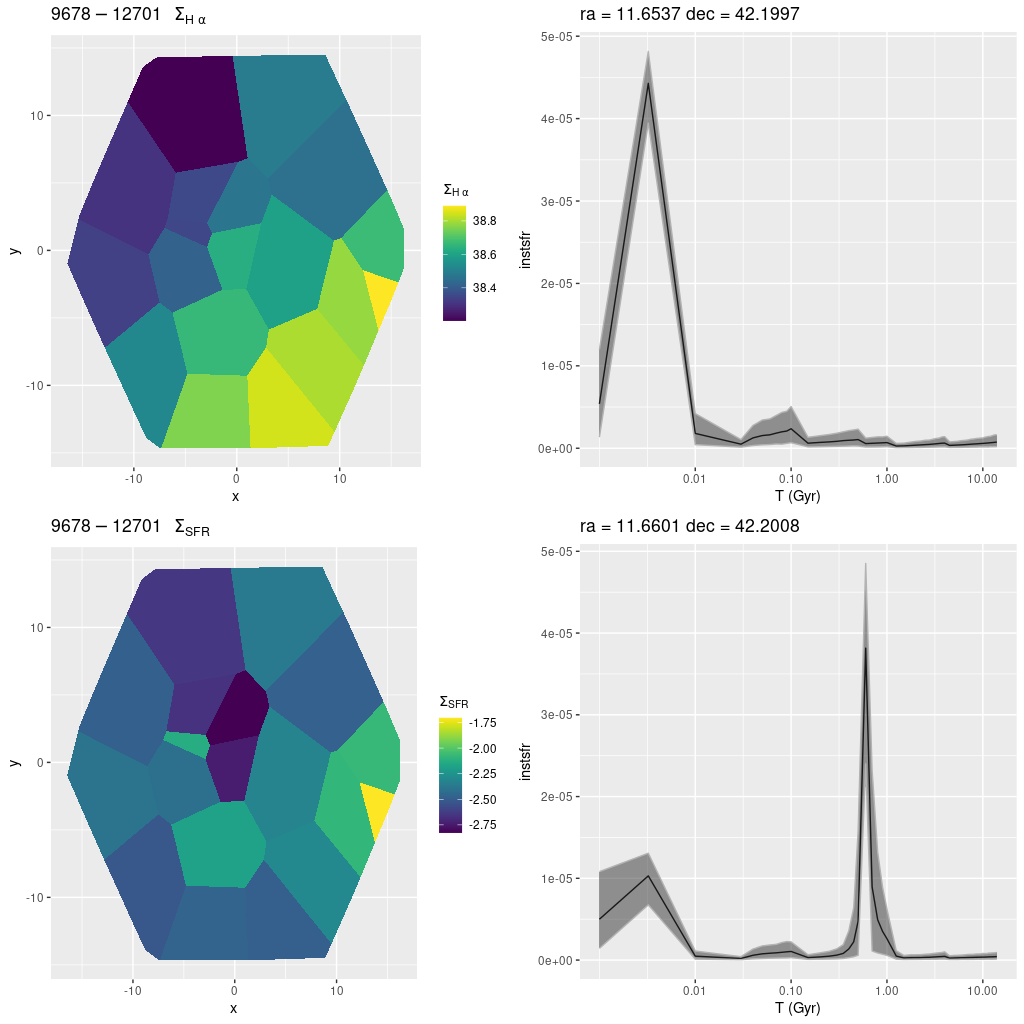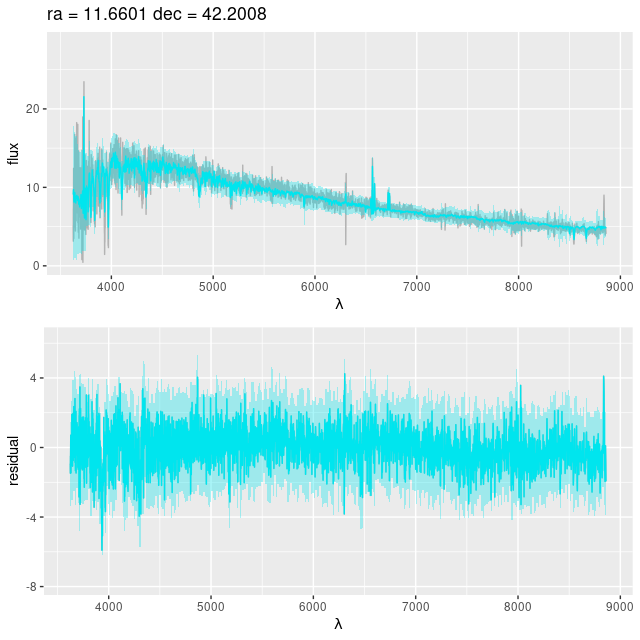On to the final batch, which I don’t think is going to be very interesting.
plateifu 9678-12704 (mangaid 52-22)
If my calculations reported in the last post are correct this is well in the outer disk at a distance of about 15.4 kpc from the nucleus. Other than that there’s nothing much to say about it. There are no cataloged objects of interest in the IFU footprint. There is diffuse emission with a fairly strong gradient decreasing from northwest to southeast, which is basically moving outward in the disk. There may be low level ongoing star formation.

plateifus 9678-6103 and 9678-12702 (mangaid 52-19 and 52-24)
These are both in interarm regions with absolutely no cataloged objects of interest and complete blanks in the Galex false color image. Even diffuse emission is too weak to detect confidently. All regions in both show very low recent star formation with a long period of quiescence.
plateifu 9678-12701 (mangaid 52-25)
Finally, this is the outermost IFU in the program, located an estimated 15.7 kpc from the nucleus and very close to the major axis. Somewhat oddly it’s close to the most vigorously star forming region in this segment of the outer disk but offset by a little more than an IFU width. In fact in the Galex image it appears to be in a sort of notch with few UV bright sources.

No H II regions are cataloged within the IFU footprint but there is diffuse emission throughout with mostly starforming-like line ratios. The region with the highest modeled star formation rate is in the western corner of the IFU, where a number of blue stars can be seen in the PHAT color cutout. There is a single, somewhat isolated bright star near the center of the IFU. The SFH model for that region is in the lower right panel below. The model indicates a rather strong and short burst of star formation a little less than a Gyr ago. How much the model is influenced by the star is hard to say. The fit to the data is actually rather good. The star may be in the foreground: In Gaia DR3 (data retrieved through Aladin) its distance is listed as 2395 pc, which would obviously place it in the Galaxy. But that is based on estimates of its surface temperature and gravity rather than parallax, which is measured as negative and consistent with 0.


After looking through all the data again I have to say I’m puzzled by some of the choices of IFU locations. All but 5 are in or very close to spiral features visible in Galex, but most are offset by as little as an IFU width from regions with more star forming activity. Even plateifu 9678-12703, which is very close to the most active starforming region in the PHAT coverage area, only captures the edge of a series of bright H II regions.
Overall I think the SFH models are successful with some caveats. Areas associated with bright Hα emission are generally showing increasing recent star formation rates reasonably consistent with the level of emission. It’s interesting that there are often nearby regions (separations ~10 pc or so) that have recently peaked but with high 100 Myr averaged SFR. This suggests we can actually see propagation of star formation over short distances and time scales.
A big concern is the effect of sampling small stellar mass regions, and in particular the effect of exceptionally luminous stars on model results. I plan to address this in a follow-up sometime soon.
